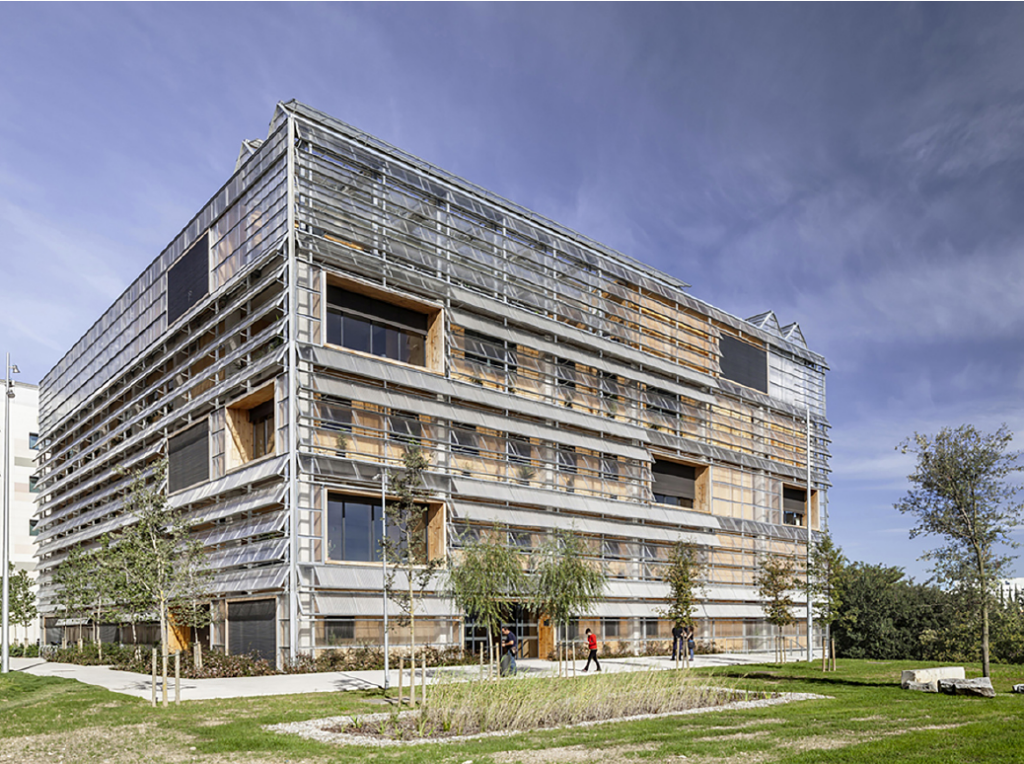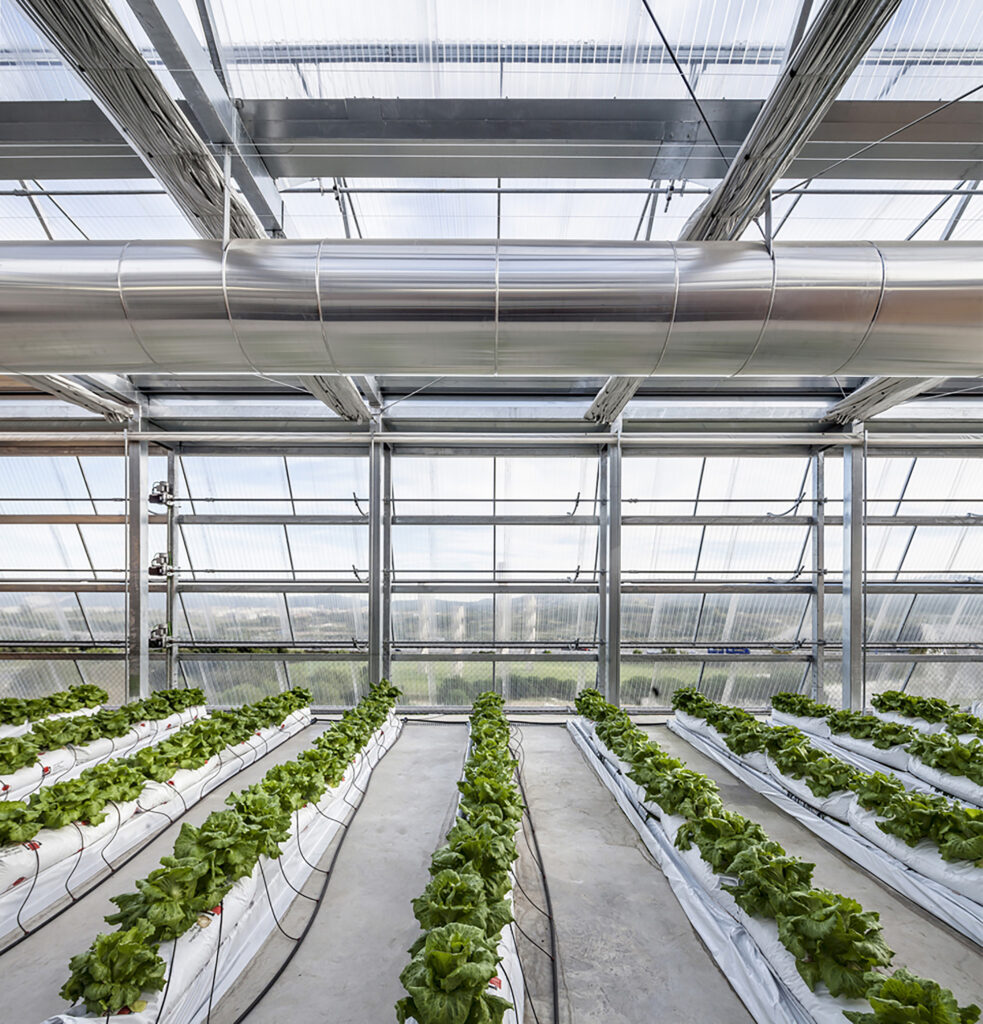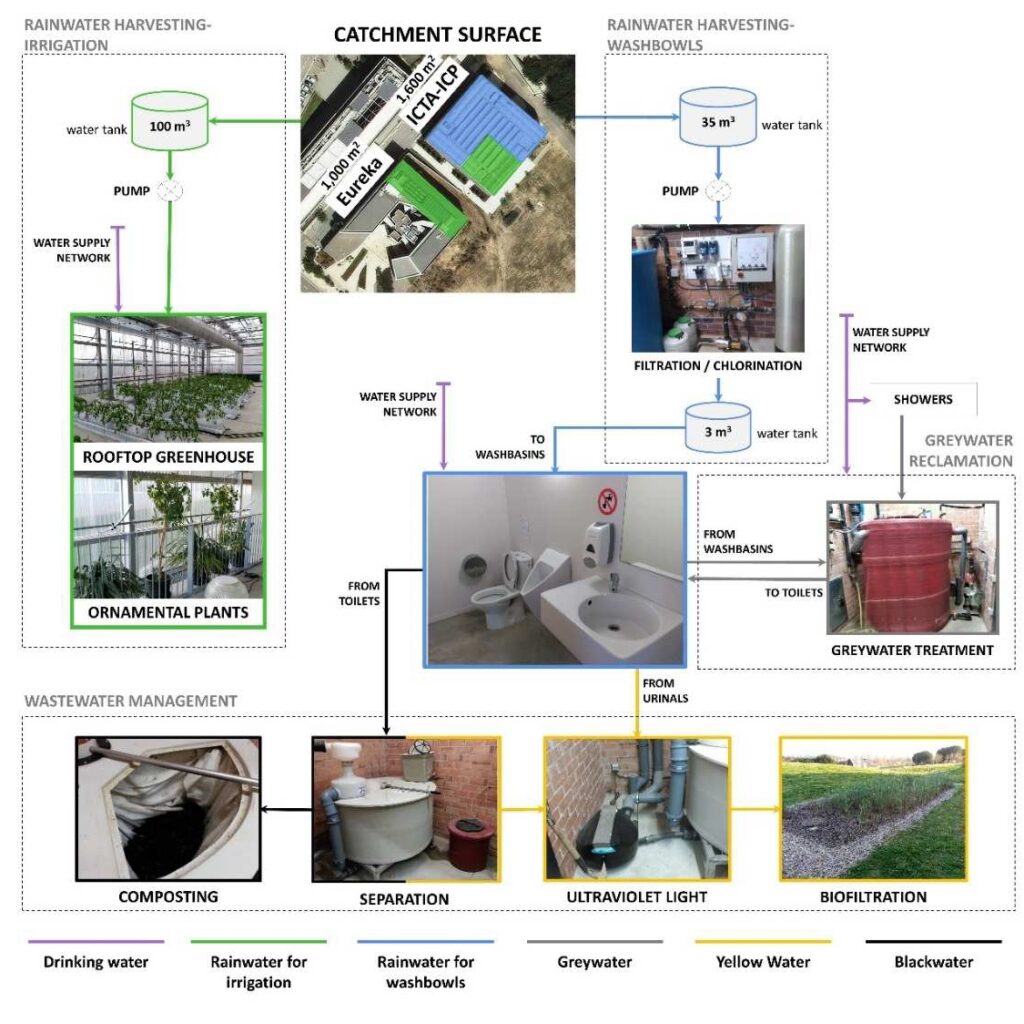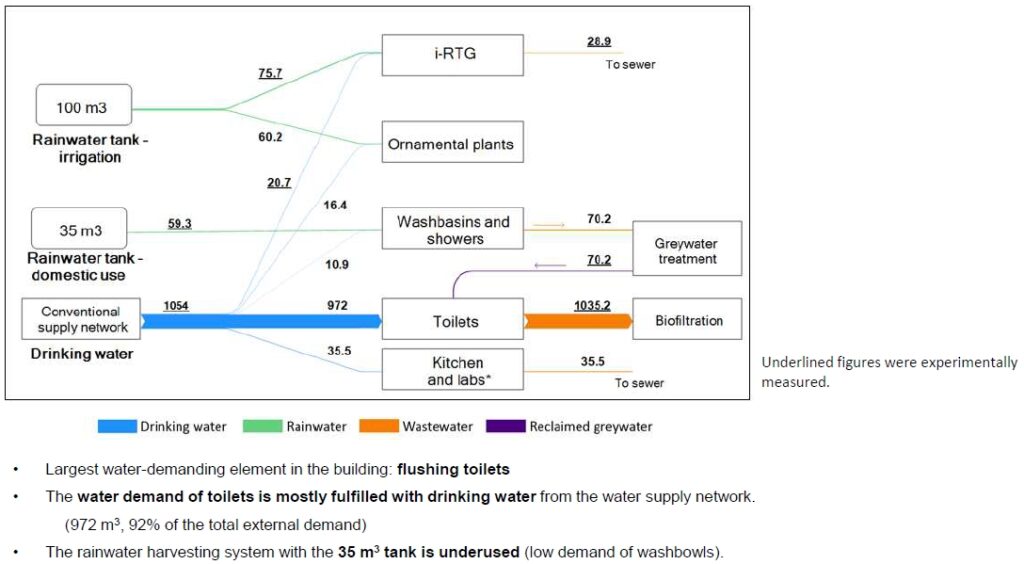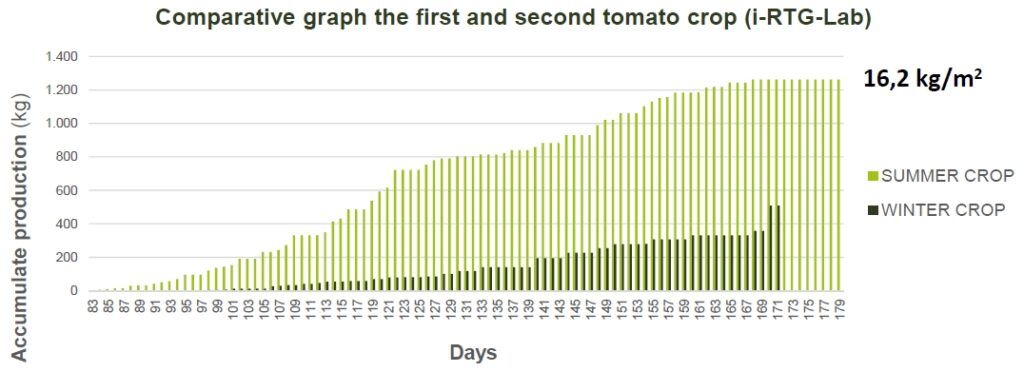Research Center ICTA-ICT at Campus UAB, Spain
Potential environmental and economic benefits from local food production in Mediterranean rooftop greenhouses
The project has been designed with sustainability criteria, both in terms of energy and water consumption for the operation and in the materials used for the construction.
The building mainly houses offices and laboratories which, due to their activity, tend to generate heat. The design aims to take advantage of this heat in the winter and drive it out in the summer through natural ventilation. The facade elements open and close automatically to regulate solar capture and ventilation.
In contrast to conventional RTG projects. the RTG-Lab is an Integrated RTG (i-RTG) that exchanges the residual flows (residual heat, rainwater and CO₂)
with the ICTA-ICP building. Different crops have been cultivated: tomato, lettuce… and bean.
The building optimizes the whole water cycle by reducing the demand and consumption through the reuse of rainwater, greywater, yellow and waste water.
Minimisation of the water demand
• Washbowls
• Irrigation of ornamental plants
Use of harvested rainwater
• Rainwater for domestic uses
• Rainwater for irrigation
Reuse of greywater
• Flushing toilets
The building optimizes the whole water cycle by reducing the demand and consumption through the reuse of rainwater, greywater, yellow and waste water.
Four central courtyards reduce the need for artificial light. On the roof there are plantations with greenhouses and areas for relaxation. The building optimizes the entire water cycle by reducing demand and consumption through reuse of rainwater, gray, yellow and black water.
All water-consuming points are connected to the water supply network to ensure supply.
Rainwater used in toilets instead of washbowls
• Better utilization of rainwater collected (203 m3 → 476 m3 )
• Avoids filtering and chlorination (washbowls use drinking water)
Reduction of the discharge volume of toilet cisterns
• Reduces drinking water demand and the wastewater volume by 30%.
Overall reduction of 69% of the demand for drinking water


